10 Best Forex Trading Strategies For Beginners
Discover the 10 best Forex trading strategies for beginners with simple tips to start trading smarter and more confidently.

Forex trading can feel overwhelming, especially for beginners trying to figure out where to learn trading and how to start. You might find yourself staring at charts, unsure where to put your hard-earned money, hoping to maximize your trading potential with your capital. But don't worry; this guide will help you explore efficient forex trading strategies to build your confidence and skills. Whether you're looking to grow a small account or take your first steps into the market, we've got you covered.
One tool is Aqua Funded's funded trading program. It can help you maximize your capital and start trading in a supportive environment with clear guidelines.
Is Forex Trading Easy for Beginners
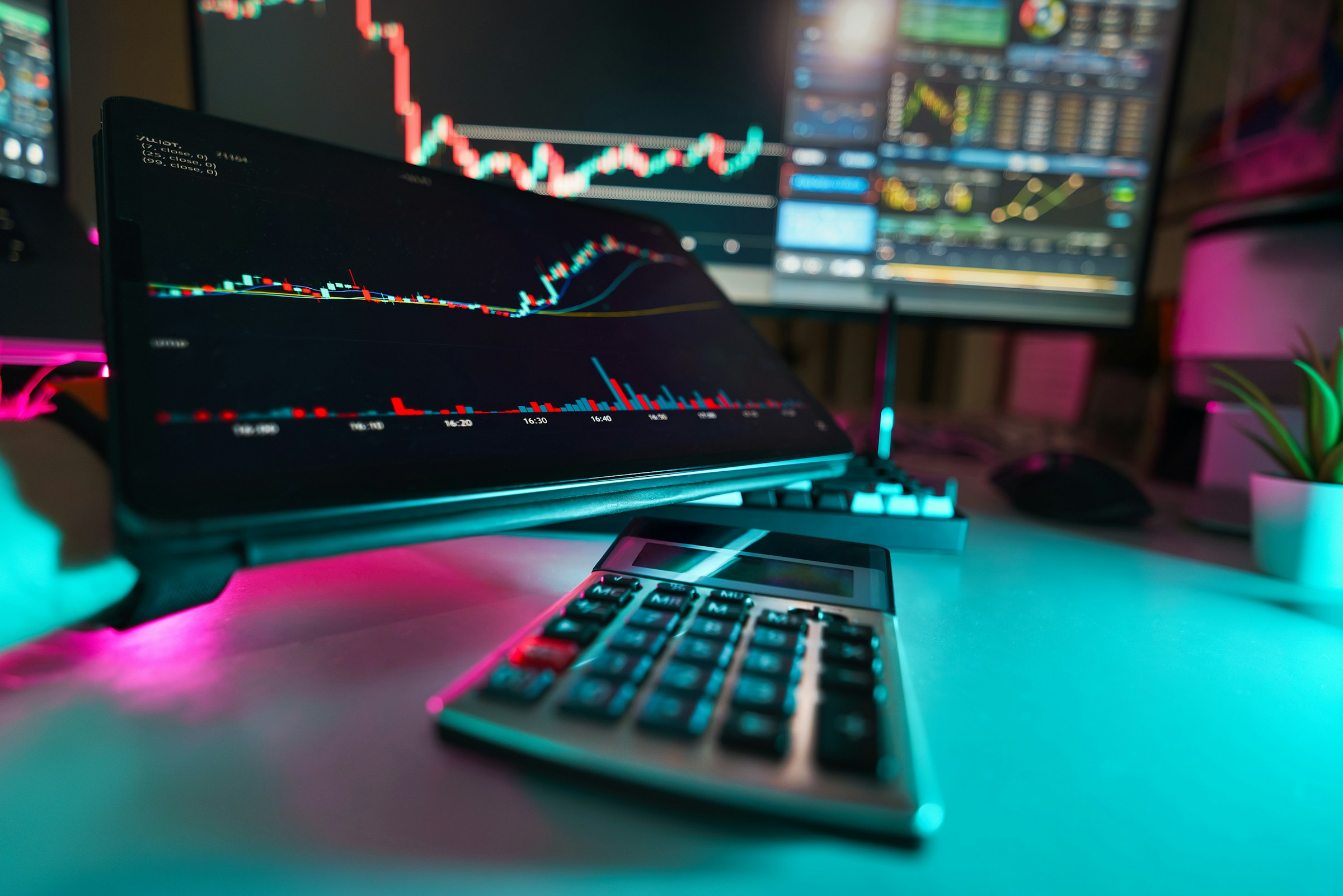
Forex trading isn't a walk in the park for newcomers. While the market seems friendly and accessible, the reality is quite different. Navigating the complexities of forex trading requires a deep understanding of market dynamics. You’ll grapple with economic data, geopolitical events, interest rates, and market sentiment, all influencing currency prices. These factors are intricate and take time to grasp.
The Challenges of High Volatility
Forex markets are notorious for their rapid movements. Prices can shift in the blink of an eye, turning a promising trade into a loss before you can react. This level of volatility can be brutal for those still finding their footing.
Leverage: Friend or Foe?
Leverage lets you control larger positions with less capital, but it’s a double-edged sword. While it can amplify gains, it can do the same to losses. Without careful risk management, a single misstep can wipe out your account.
The Emotional Rollercoaster
Forex trading isn’t just a numbers game, it’s a mental one too. Fear, greed, and overtrading are common pitfalls. They lead to impulsive decisions that can cost you dearly. Emotional discipline is essential, yet often underestimated by those just starting.
Building the Skills You Need
Success in forex demands a blend of technical and fundamental analysis. You’ll need to read charts, decipher indicators, and stay updated on economic news. Consistent risk management is non-negotiable. Developing these skills takes time and practice; there’s no shortcut.
11 Expert Tips for Forex Trading

1. Start Trading Without Risking Your Capital
Kick off your trading journey with AquaFunded. Here, you can leverage your skills without dipping into your pocket. Access accounts up to $400K with flexible trading conditions. There's no rush, take your time achieving profit targets, enjoy up to 100% profit split, and be part of a community of over 42,000 traders. They've already earned more than $2.9 million in rewards. With instant funding options and customizable challenge paths, you keep what you earn.
2. Dive into the Market’s Mechanics
Understanding the forex market is your first crucial step. Study currency pairs and learn what affects their movements. This foundational knowledge is an investment in time that can save you from costly mistakes later.
3. Craft Your Trading Blueprint
A solid trading plan is your best friend. Set your profit goals, define your risk tolerance, choose your methodology, and establish evaluation criteria. Before you place a trade, ensure it aligns with your plan. You'll think more clearly before the trade, not after.
4. Test Drive with No Risk
Before you plunge in, practice with a risk-free account. This lets you test your plan in real market conditions without financial consequences. It’s your chance to tweak and refine your strategies before committing real money.
5. Analyze Market Conditions Like a Pro
Whether you prefer fundamental analysis or technical tools or a mix of both, use them to your advantage. These methods help you identify potential trading opportunities and navigate the market’s ebbs and flows.
6. Set Clear Boundaries
Know your limits and stick to them. Determine how much you're willing to risk on each trade and never exceed that amount. Preservation is key to longevity in trading.
7. Protect Your Profits with Stops and Limits
You can't watch the markets every second. Use stop and limit orders to manage risk and lock in profits. Trailing stops are handy, they adjust as the market moves, helping to protect gains if the market reverses.
8. Keep Emotions in Check
The market takes a turn, and you’re tempted to break your plan. Don’t. Emotional decisions lead to mistakes. Stick to your plan, even when things go south. Recovering from losses gradually is smarter than chasing quick fixes.
9. Maintain a Steady Pace
Consistency is crucial. All traders face losses, but those with a positive edge are more likely to succeed. Education and planning are excellent, but discipline and patience are your true allies.
10. Be Open to Change
While sticking to a plan is vital, adaptability is equally essential. If things aren’t working, tweak your approach. As your experience grows, your needs and goals might change. Ensure your plan reflects this.
11. Choose the Right Broker for Your Needs
Select a trading partner who aligns with your goals. Consider pricing, execution, and customer service quality. The right broker can significantly enhance your trading experience.
Related Reading
- How Long Does It Take To Learn Day Trading
- How Long Does It Take To Learn Forex Trading
- How Do You Backtest A Trading Strategy
- Which Trade Is Best For Beginners
- Do You Pay Tax On Forex Trading
- How Many Day Traders Are Successful
- How Much To Start Day Trading
- How To Start Trading As A Student
- Forex Trading Psychology
- How To Do Trading Business
10 Best Forex Trading Strategies For Beginners
.jpeg)
1. Breakout Trading: Catch the Wave Early
Breakout trading is a popular strategy for beginners in forex. A breakout happens when prices move beyond a defined support or resistance level. When prices surge above resistance, it's called a bullish breakout; when they drop below support, it’s bearish. Breakouts often signal increased market volatility. By waiting for a breakout, traders can ride the wave of a new trend as it starts.
Pros
- Easy to grasp and execute
- Can capture significant movements at the start of a trend
- Works well in volatile, momentum-driven markets
Cons
- False breakouts are common and can lead to losses
- Requires quick timing and execution
2. News Trading: Ride the News Wave
News trading is about taking positions based on economic data releases, major news events, or significant geopolitical developments. News traders aim to capitalize on sharp short-term price movements that occur in reaction to news. For example, a trader focusing on oil might trade based on OPEC announcements or geopolitical events affecting oil supply.
Pros
- Opportunity to profit from rapid price swings
- Potentially highly profitable if the market reacts strongly
- Allows traders to base decisions on real-world events instead of just charts
Cons
- High volatility can result in significant, rapid losses
- Requires fast decision-making and execution
3. Moving Average Crossover: Spot the Signals
Moving averages smooth out price data, creating a constantly updated average price over a chosen period. Traders use moving averages to identify trend direction and determine support and resistance levels. When prices cross their moving averages, it often triggers a buy or sell signal.
Pros
- Easy for beginners to understand
- Useful across multiple timeframes
- Helpful for identifying trend direction and reversals
Cons
- A lagging indicator can result in late signals
- Can produce false signals in sideways markets
4. Trend Trading: Go With the Flow
Trend trading involves identifying and trading in the direction of established market trends. Traders use charts, indicators, and patterns to pinpoint trends, entering positions once the trend is clear. They may wait for a pullback before entering. Trend traders often have a medium to long-term horizon, riding trends for extended periods to maximize profits.
Pros
- Can generate large profits if trends persist
- Easier to align with the overall market direction
- Less stressful due to more extended holding periods
Cons
- Requires patience to wait for trend confirmation
- Trends can reverse suddenly, wiping out profits
5. Carry Trade: Profit From Rate Differences
Carry trading involves profiting from interest rate differentials between countries. Traders borrow from a low-interest-rate currency to buy a currency with a higher rate, profiting from the rate difference. Common pairs include AUD/JPY and NZD/JPY due to their high rate spreads. While popular, carry trades can be risky and are often highly leveraged.
Pros
- Generates profit from interest rate differences even without price movement
- Works well in stable markets with predictable interest rate policies
- Can provide consistent returns over time
Cons
- Highly risky in volatile markets or during economic changes
- Often requires ample leverage, increasing risk
6. Range Trading: Play the Oscillation
Range trading involves trading within a defined price range, buying at support levels, and selling at resistance. Traders profit from oscillations between support and resistance levels. Long positions are opened at the low end of the range and closed at the high end, with short positions taken at the high point and closed at the support level.
Pros
- Effective in stable, sideways markets
- Clear entry and exit points at support/resistance levels
- Can generate multiple small, consistent profits
Cons
- Doesn’t work well in trending markets
- Breakouts can cause sudden, unexpected losses
7. Fundamental Analysis: Understand the Bigger Picture
In fundamental analysis, traders assess a country’s economic fundamentals to determine whether a currency is undervalued or overvalued and how its value is likely to move relative to another currency. This can involve looking at retail sales, GDP, CPI, inflation, and other economic indicators.
Pros
- Helps understand the broader economic picture
- Applicable to both short-term and long-term trading
- Builds strong decision-making skills beyond charts
Cons
- Requires deep research and understanding of economics
- Market reactions can be unpredictable, even with correct analysis
8. Pattern Trading: Recognize the Patterns
Pattern trading involves identifying specific chart patterns, such as double tops and bottoms, cup and handle, head and shoulders, triangles, and flags. Traders aim to profit from the repetition of recognizable patterns in market price action. Pattern recognition software and technical analysis are often used to identify and confirm trading signals.
Pros
- Visual and relatively easy to learn for beginners
- Patterns repeat across markets and timeframes
- Works well when combined with other technical indicators
Cons
- Subjectively, different traders may see different patterns
- Can fail in volatile or erratic markets
9. Momentum Trading: Catch the Strength
Momentum trading involves identifying strong price movements in a particular direction and trading based on the expectation that the trend will continue. Momentum strategies may take into account both price and volume, often using visual analysis tools like oscillators and candlestick charts.
Pros
- Can capture strong, fast price moves
- Provides clear signals when trends are strong
- Works across different assets and timeframes
Cons
- Can lead to late entries if momentum slows
- High volatility increases risk
10. Macro Trading: Focus on the Big Picture
Macro trading involves identifying broad macroeconomic trends and geopolitical events that influence financial markets. Traders use economic indicators, monetary policy decisions, geopolitical developments, and other macroeconomic factors to form a view on movement direction.
Pros
- A broad, diversified approach can trade multiple markets
- Long-term macro trends can yield substantial returns
- Based on real-world events and policies
Cons
- Requires strong global economics knowledge
- Slow to show results, may need more extended holding periods
Turn your trading skills into substantial profits without risking your capital. AquaFunded gives you access to accounts up to $400K with the most flexible trading conditions in the industry, including no time limits, easy-to-achieve profit targets, and up to 100% profit split. Join over 42,000 traders worldwide who've already collected more than $2.9 million in rewards, all backed by our 48-hour payment guarantee. Start trading today with instant funding options or prove your skills through our customizable challenge paths and keep up to 100% of what you earn.
10 Best Courses to Learn Forex Trading
1. Aqua Funded: Propel Your Trading Skills
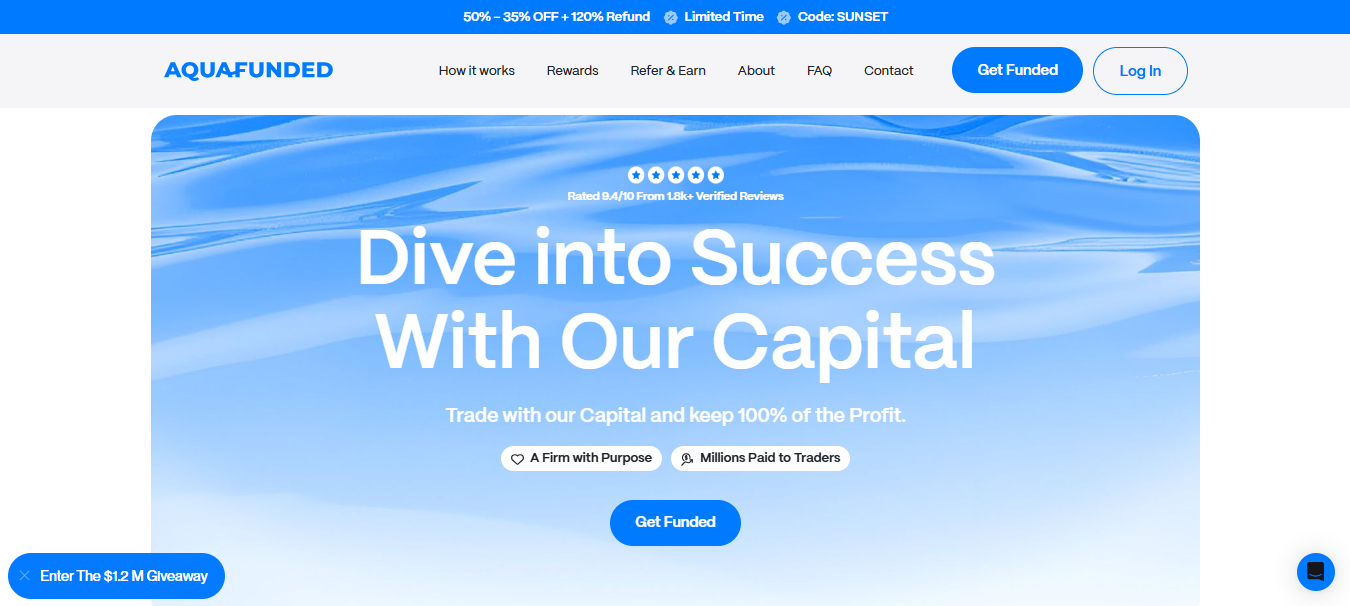
AquaFunded lets you leverage your trading abilities to generate significant profits without risking personal capital. Gain access to accounts up to $400,000 with the industry’s most flexible trading conditions. There are no time limits, simple profit targets, and up to a 100% profit split. Join over 42,000 traders worldwide who've already earned more than $2.9 million, all backed by a 48-hour payment guarantee. Start trading immediately with instant funding options or showcase your skills through customizable challenges and keep up to 100% of your earnings.
2. Home Trader Club: Comprehensive Forex Education

The Home Trader Club, based in London, offers a rich array of educational content tailored to different learning styles. Founded by Vladimir Ribakov, a Certified Financial Technician, the platform provides various membership options. The standard package, at $37 a month or $370 annually, includes real-time trading ideas, community access, educational content, webinars, and tools. Whether you’re a beginner or an advanced trader, this platform offers something for everyone.
3. IG: Top-Notch Forex Education

IG consistently ranks as a top choice for forex education, offering award-winning content across its websites, platforms, and the DailyFX portal. The IG Academy provides a comprehensive learning experience through articles, videos, and quizzes. With a dedicated mobile app and access to a community of over 64,000 traders, IG offers a robust educational platform to help you master forex trading strategies.
4. Udemy – The Complete Foundation FOREX Trading Course: Value for Money
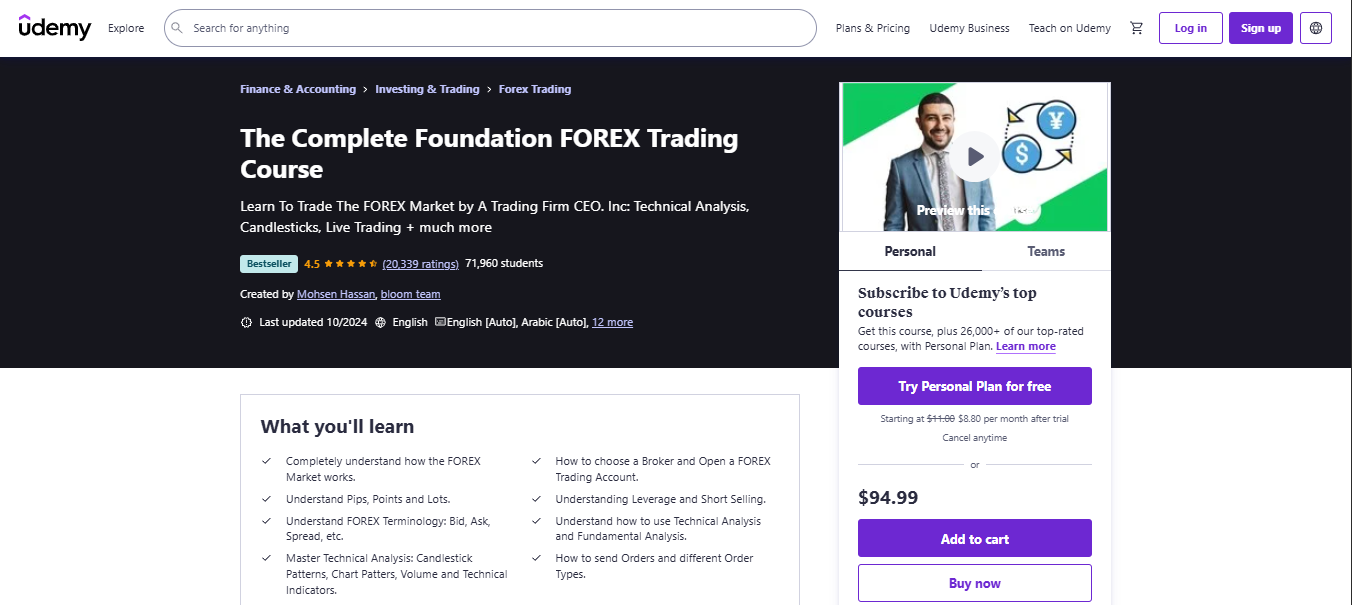
For traders seeking excellent value, “The Complete Foundation Forex Trading Course” on Udemy is a standout option. Priced at $99.99, the course often features steep discounts. It covers essential topics like forex terminology, chart analysis, trends, patterns, and risk management. Upon completion, students receive a certificate. Whether discounted or not, this course offers tremendous value for the educational content received.
5. AvaTrade: Extensive Forex Education
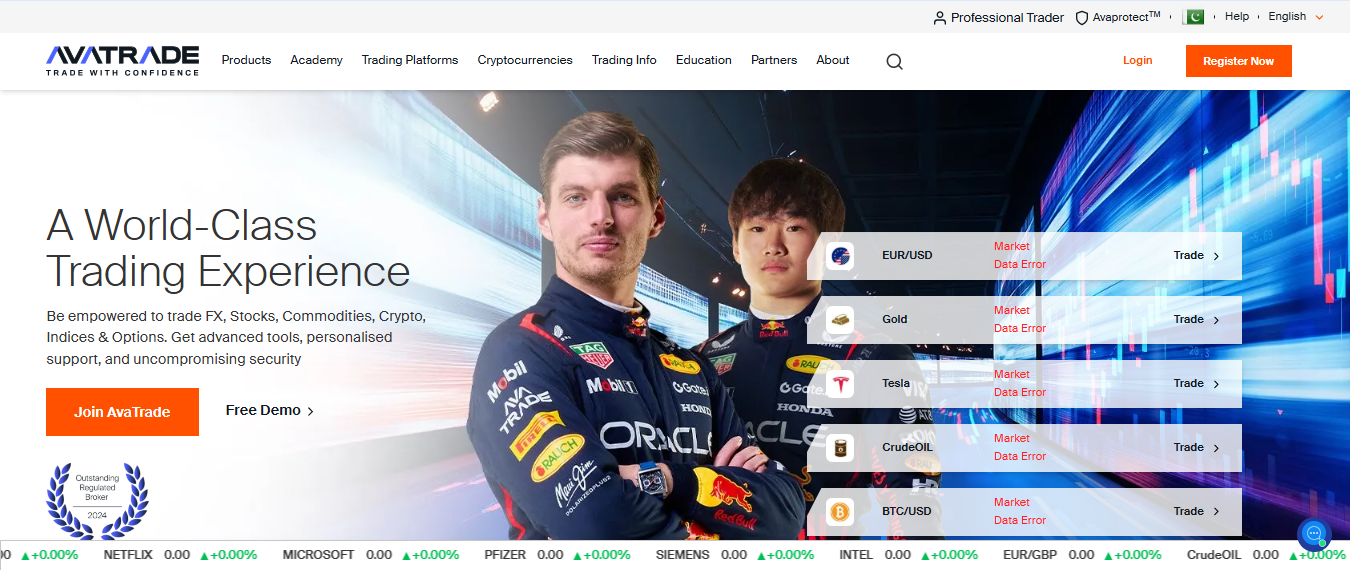
AvaTrade’s AvaAcademy offers an expansive selection of educational resources, including over 20 courses, 145 lessons, and 45 quizzes. Niche topics like Donchian Channels are explored in detail. AvaTrade also hosts video webinars, archived on YouTube and Vimeo, to enhance its educational offerings. With comprehensive content and lessons, AvaTrade is a top choice for traders seeking to deepen their knowledge.
6. Master MT4 Like A Pro Forex Trader on Udemy: Master MetaTrader 4

Udemy’s “Master MT4 Like A Pro Forex Trader” course is perfect for those learning to navigate MetaTrader 4. Priced at $84.99, it’s often heavily discounted. Students learn to organize setups, trade effectively, and understand the platform’s tools and indicators. With lifetime access, users can revisit the material anytime. This course provides a thorough understanding of MT4 for both beginners and experienced traders.
7. Interactive Brokers: Diverse Educational Resources
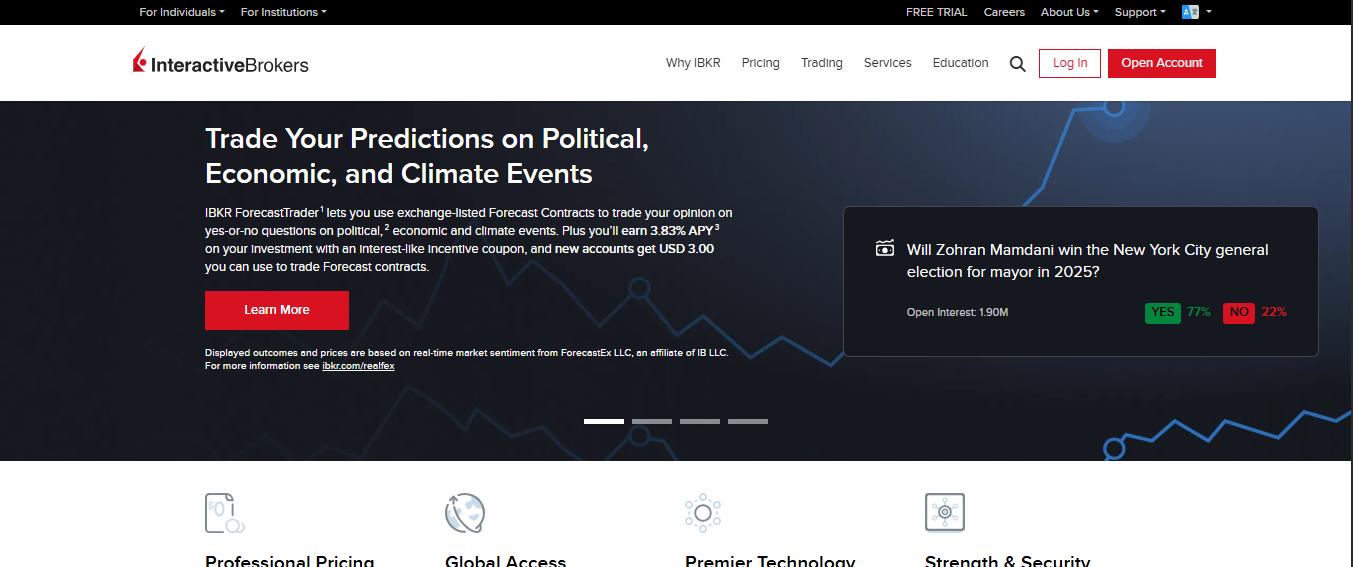
Interactive Brokers offers a wealth of educational content, including its Traders' Academy portal, IBKR Quant blog, and IBKR Campus. The Traders' Academy covers various financial markets with lessons and videos organized by experience level. While primarily focused on stock trading, the platform has developed a growing selection of forex-specific content. For those interested in a broad financial education, Interactive Brokers is a strong choice.
8. Six Figure Capital: Fast-Track Forex Learning
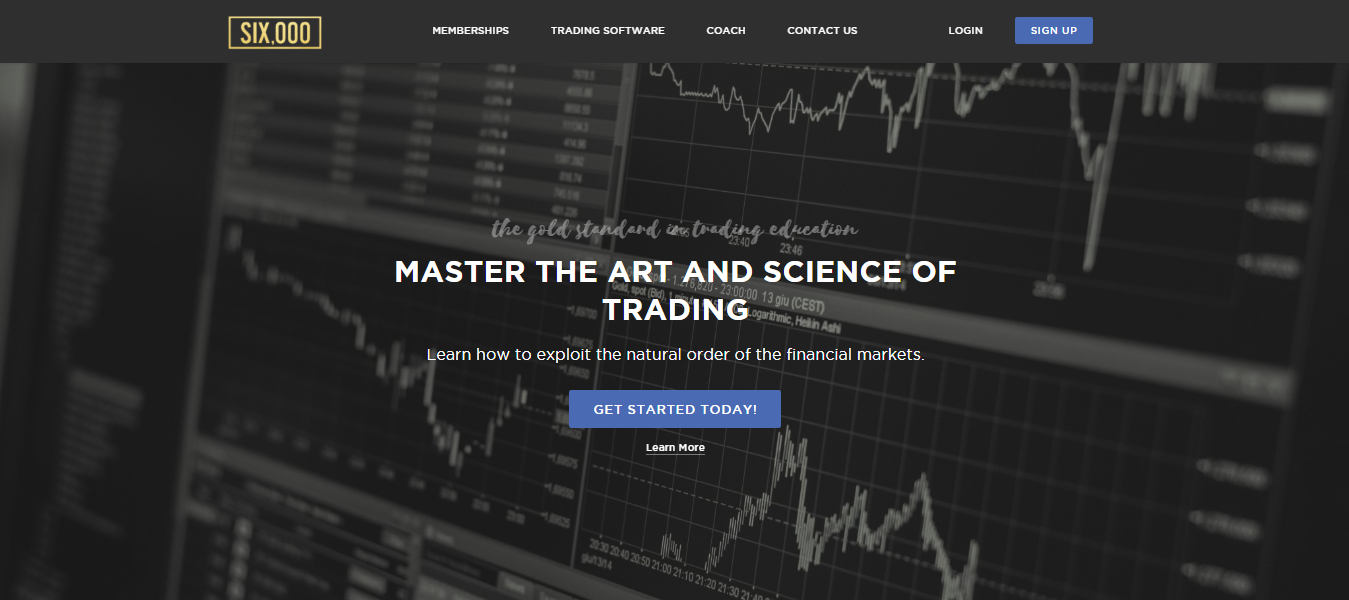
Six Figure Capital, founded by professional trader Lewis Glasgow, offers a structured 14-day course ideal for those seeking a quick introduction to forex. Membership options include a 12-month contract at £97 a month or a one-time payment of £800, both providing lifetime access. The curriculum covers essential trading concepts and techniques, making it an excellent choice for those looking to start forex trading quickly.
9. Forex.com: Interactive Learning Experience
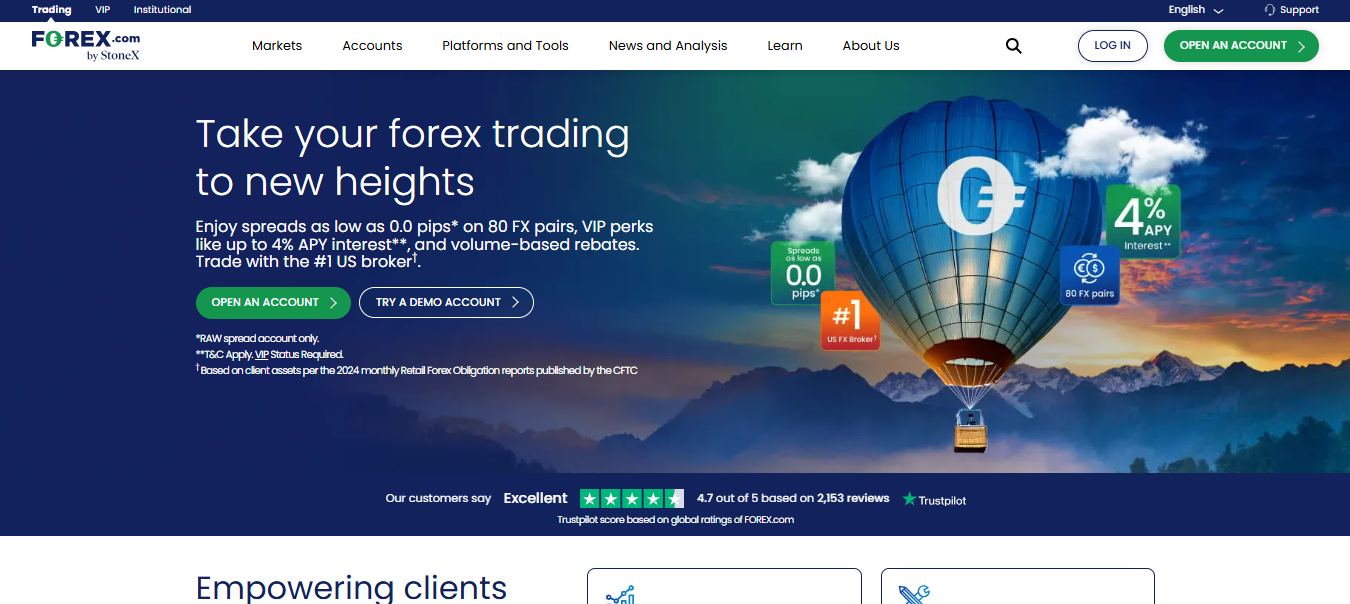
FOREX.com offers improved interactive educational content with free forex courses, progress tracking, and quizzes. The platform stands out for the quality of its content and the effectiveness of its integrated multimedia. Infographics complement the learning experience, and educational webinars are held regularly. The extensive library of archived content on YouTube provides additional learning opportunities for traders at all levels.
10. eToro Academy: Expanded Educational Resources

In 2023, eToro Academy expanded its educational content across forex, stocks, crypto, and options trading. The platform offers high-quality videos, guides, and academic modules. Highlights include the “Thematic Investing with ETFs” series, created in partnership with iShares by BlackRock. With a broad range of resources, eToro Academy provides a comprehensive learning experience for traders.
Related Reading
- How To Learn Trading Online
- Is Day Trading Worth It
- Is Day Trading Hard To Learn
- Trading Strategy For Beginners
- Position Trading Strategy
- Profitable Gold Trading Strategy
- Profitable Gold Trading Strategy
- Trading Strategy For Beginners
- Position Trading Strategy
- Option Trading Technical Analysis
Join Our Funded Trading Program Today - Trade with our Capital and Keep up to 100% of the Profit.
Imagine honing your Forex trading strategies without the gut-wrenching fear of losing your cash. AquaFunded has flipped the script on trading, allowing you to access accounts up to $400,000 without risking a dime of your capital. This isn’t just a safety net; it's an opportunity to evolve your trading skills, especially for beginners.
You’re free to focus on maximizing your profits with flexible trading conditions designed with real traders in mind. Forget about time limits or complex hurdles. AquaFunded’s easy-to-hit profit targets and up to 100% profit split mean you can reap the rewards of your hard work and skill without unnecessary stress. What could be better than that?
Join a Community of Successful Traders and Start Earning Rewards
Over 42,000 traders worldwide have already taken the AquaFunded plunge, collecting more than $2.9 million in rewards. These figures aren’t just numbers; they’re proof that AquaFunded is the real deal. And when it comes to getting paid, their 48-hour payment guarantee means you’ll never be left wondering when you’ll see your profits.
Instant funding options allow you to start trading right away, while customizable challenge paths offer a chance to prove your skills and keep 100% of your earnings. AquaFunded was designed with traders of all experience levels in mind, and that means you’ll find a community of like-minded individuals who are ready to support you, whether you’re just starting or you’ve been trading for years.
Related Reading
- Forex Risk Management Tools
- Algorithmic Trading Risk Management
- Best Forex Trading App For Beginners
- What Is Risk Management In Trading
- Trading Risk Management Tools
- Best Day Trading Platform For Beginners
- Best Indicators For Swing Trading
- Day Trading Risk Management
- Best Platform For Day Trading Crypto
- Best Beginner Trading App


